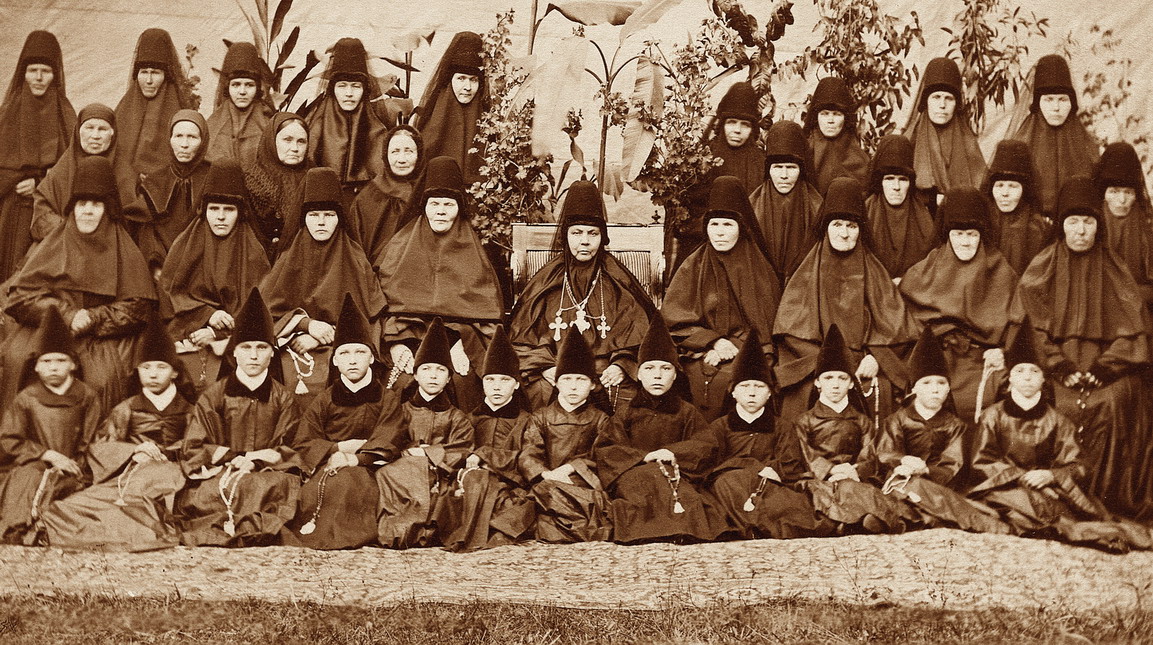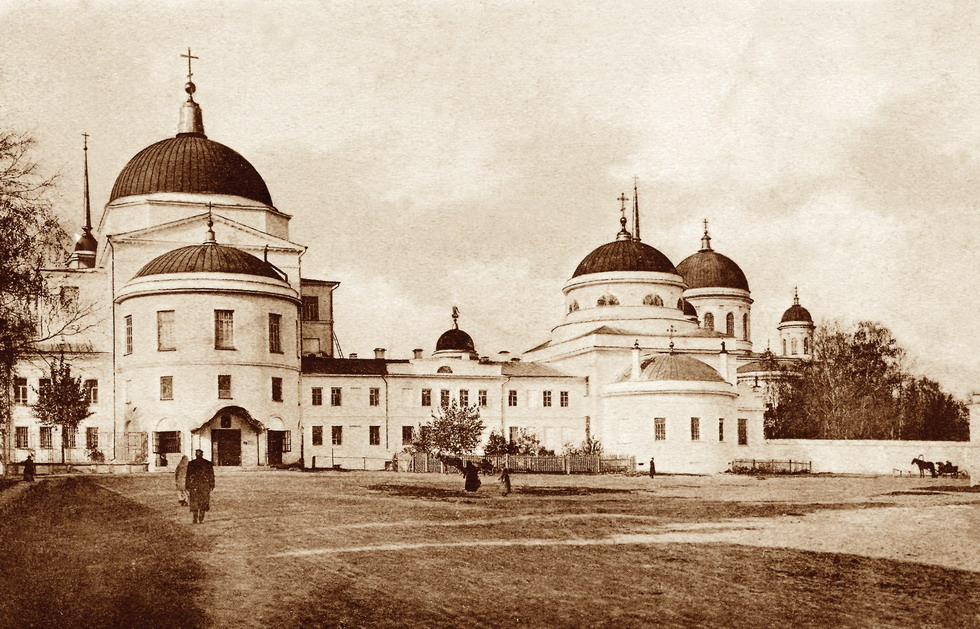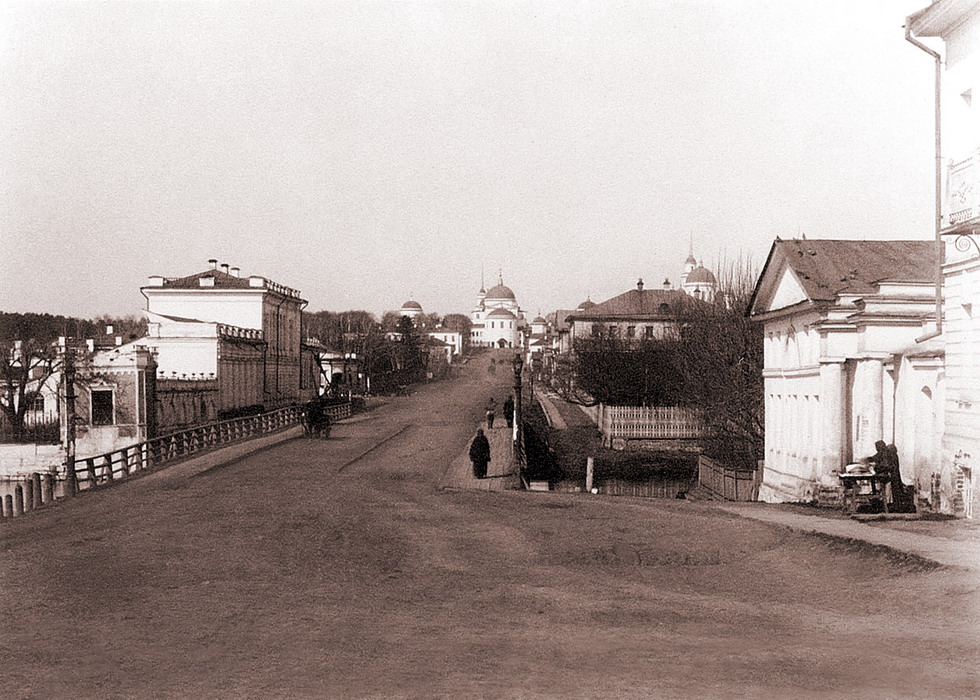
 |
| The sisters of the monastery. Photo from the end of the XIX century. |
The history of the Novo-Tikhvinsky monastery dates back to the end of the 18th century. It grew out of an alms-house at the cemetery church. The church was consecrated in the name of the Dormition of the Most Holy Theotokos, and the Heavenly Queen never left the sisters of the abode without her help. In 1809 by the imperial Order, the small community was transformed into a coenobitic women's monastery. Due to tbe zealous labor of the nuns and the aid of the people in Ekaterinburg, the monastery was being built and expanded, and soon became the largest one in the Urals. The magnificent architectural ensemble was deservedly considered an adornment of Ekaterinburg. For people of all social classes the monastery was a small island of spirituality amidst the vain worldly sea. On feast days hundreds of pilgrims would come to venerate the main relic of the monastery -- the Tikhvin icon of Theotokos.
 |
| The monastery. Photo from the beginning of the XX century. |
Before the revolution, there dwelt about 1000 sisters in the abode. Those entering the monastery would receive an education and would be taught crafts. At the abode's territory there were built six churches, residences for the sisters, and buildings where the various workshops were located: gold-embroidery, iconographic, silk-embroidery, photographic, spinning, enamel, and the sewing one. Altogether by 1917, there were 18 workshops in the monastery. The monastery had been readily visited by pilgrims and by the members of the Royal Family among them. Emperor Alexander I was here in 1824, and in 1837 the abode was visited by the heir, the great prince Alexander Nikolayevich -- the future emperor Alexander II. In 1905, Saint righteous John of Kronstadt served a Divine Liturgy in the monastery. Tikhvin fairs timed to the patron's feast of the monastery on June 26th were quite famous. Who knows what could this once flourishing abode mean for Russia today; how many good deeds could have been done for the glory of God?
But hard times came, the times of the trial of faith. The revolution. In 1920 the abode was closed; years of desolation and devastation followed.
 |
| A view at the monastery in the beginning of the XX century. |
Only in 1994 there was issued an Edict of the Holy Synod about the restoration of the Novo-Tikhvinsky women's monastery in the city of Ekaterinburg. In 2008, the sisters of the monastery's iconography workshop painted an exact copy of the ancient miracle-working Tikhvin icon. It was consecrated in the town of Tikhvin and brought into our monastery in a festive cross procession. Hundreds of faithful come to venerate it, to pray to the Most Holy Lady, the merciful Intercessor for us before God. People resort to her especially in prayers for their children. No one walks away from Her unheard or unconsoled, but everyone receives what has been asked for, according to one's faith. .